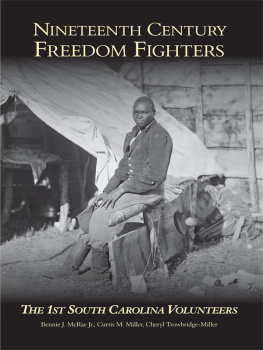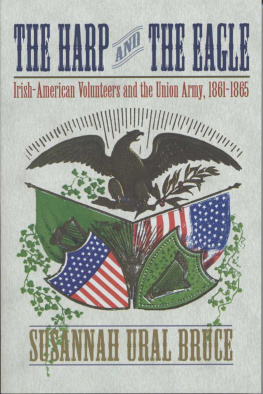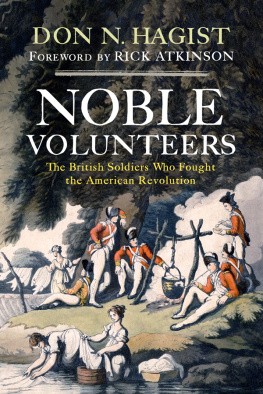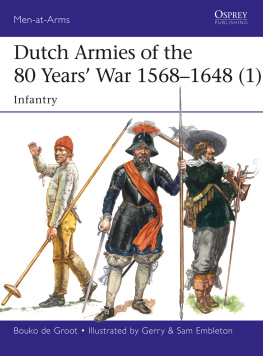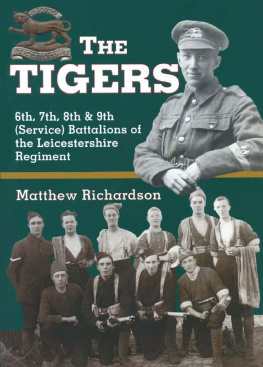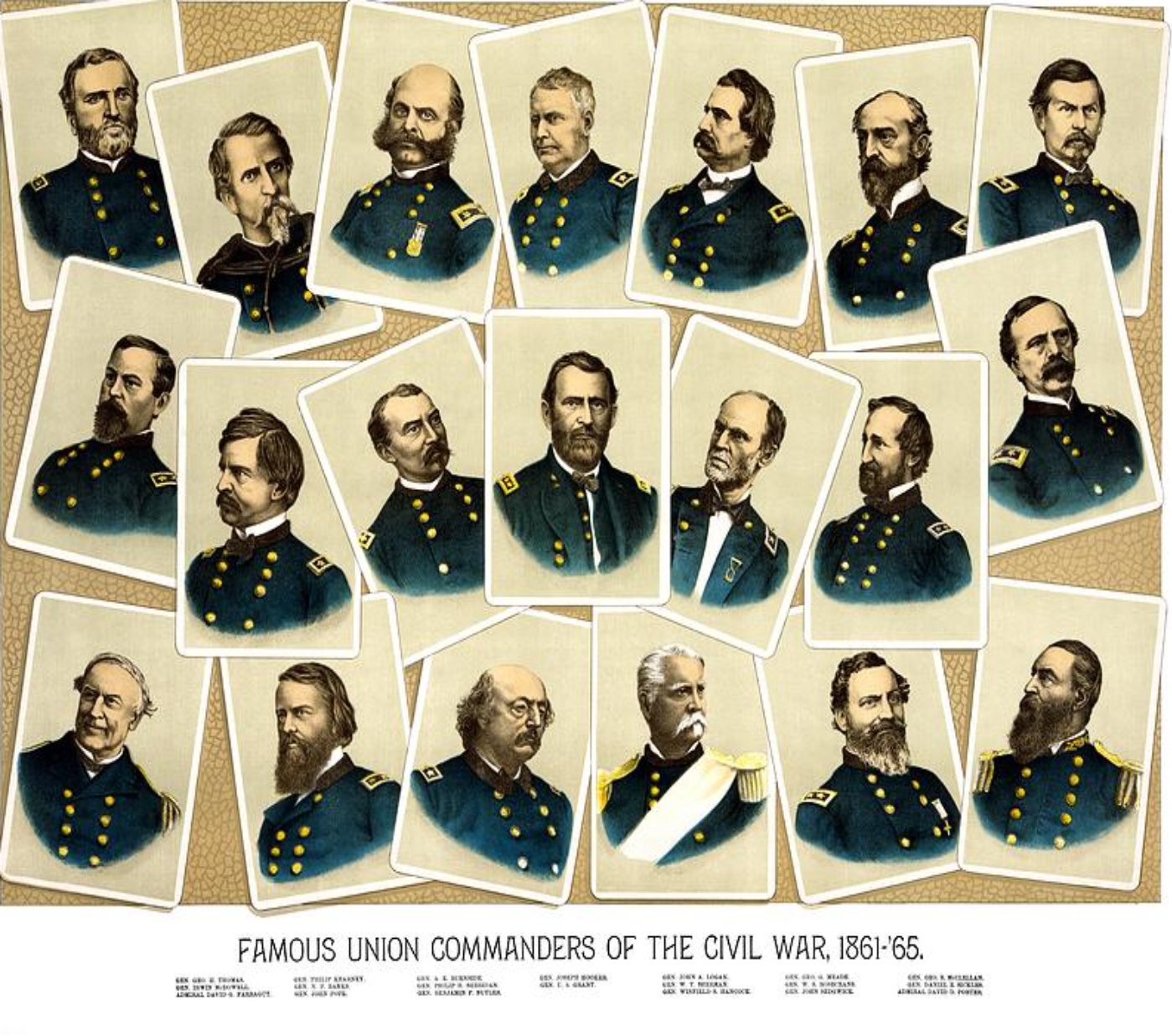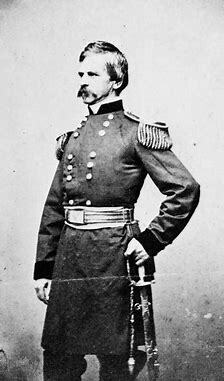CIVIL WAR POLITICAL GENERALS OF THE BLUE AND GREY
50 CITIZEN GENERALS IN THE FIRST MODERN WAR
Gene Schmiel
Civil War Political Generals of the Blue and Grey
Copyri ght 2020 by Eugene D. Schmiel
All rights reserved. No part of this publication may be reproduced, distributed, or transmitted in any form or by any means, without prior written permission
Please visit the authors web-site:
https://civilwarhistory-geneschmiel.com
Please visit the authors amazon.com web-site:
https://www.amazon.com/-/e/B00HV4SSWK
Cover Design: Gene Schmiel:
Cover Image: From top left, pictures of: Jacob Cox; Sterling Price; Wade Hampton; Alpheus Williams; John Logan; Patrick Cleburne; Nathan Bedford Forrest; Joshua Chamberlain; and James Garfield.
Frontispiece: Famous Union Commanders, including some Political Generals
CIVIL WAR PERSONALITIES, 50 AT A TIME SERIES:
NUMBER THREE
For all of my family
ALSO BY GENE SCHMIEL
Citizen-General: Jacob Dolson Cox and the Civil War Era
Lincoln, Antietam, and a Northern Lost Cause
Ohio Heroes of the Battle of Franklin
Civil War Musings and Reflections
Civil War Trailblazers and Troublemakers
Civil War Rogues, Rascals, and Rapscallions
CIVIL WAR POLITICAL GENERALS OF
THE BLUE AND GREY
Contents
PREFACE
When the Civil War began, the North and the South took different approaches to creating their armies. In the Union, General-in-Chief Winfield Scott decided to create what would be called the U.S. Volunteers. Having experienced difficulties in the Mexican War with volunteers at all levels, Scott did not want to repeat the experience. He reasoned that the war would not last long and that an additional 25,000 men added to the regular army would suffice to do all the fighting. Volunteers would guard the rivers and facilities, but little else, in his view.
The Confederacy by contrast benefited from the resignation from the U.S. army of hundreds of officers and men who decided to support secession. As a result, it was able to create a unified army from whole cloth. President Jefferson Davis used his military background and experience to form an army composed almost entirely of volunteers at first (conscription would follow later). No formal distinction was made between regulars and volunteers. Also, the several private military academies of the South, e.g. VMI and The Citadel, as well as West Point, supplied a well-trained military leadership. But, as in the Union, West Pointers would be given all major commands, which did, in the end, cause some resentment among the citizen-generals.
It was not long before Scott realized that his hopes for a limited war fought by regulars was a chimera. Nevertheless, he implemented his plans for two separate armies by both recruiting thousands to the regular ranks and seeking, via Lincolns call, volunteers. Lincoln knew public support for the war effort could be aided by giving senior military positions to political leaders, who in turn would raise more troops. He appointed many Democratic leaders to military positions to gain support from the Unionists in that party. Through the leadership of these and other state and local political leaders, thousands of men accepted the call.
Slowly but surely the two Union armies evolved: the regulars led by West Point graduates, the Volunteers led by political leaders from back home. The two merged into one military force, but the West Point graduates would almost always have overall command. Those men were given two separate ranks: one in the regular army and one in the volunteer army, whereas volunteers were never given a rank in the regular army. One inevitable result was an initial, intense rivalry between the Generals of both groups, which only subsided over time as the volunteers proved their worth. The Confederate army experienced this problem also, but on a very reduced scale.
By the end of the war, over 3 million men wore the two uniforms, the Blue and the Grey. Hundreds of those men were general officers, men who had responsibility for commanding thousands of men in combat. The great generals on both sides, Grant, Sherman, Sheridan, Lee, Longstreet, Johnston, are well known. They were all West Point graduates and professional soldiers.
There were also many near-great generals who were not professional soldiers. They were the so-called Political Generals. But few other than Joshua Chamberlain, Patrick Cleburne, Nathan Bedford Forrest, and John Logan are well-remembered. That is partly due to the fact that few non-West Pointers ever had major commands. Also, the stereotypical image of bumbling Political Generals remains strong in Civil War circles. General-in-Chief Henry Hallecks infamous statement that, It seems little better than murder to give important commands to men such as [Ben] Butler, [Nathaniel] Banks, [John] McClernand, [Franz] Sigel, and [Lew] Wallace continues to be repeated in historical circles, not as an opinion, but as a fact.
This book will introduce (or re-introduce) the reader to 50 of these Political Generals, men who did not graduate from West Point. I have chosen 25 from each side and given the reader an introduction to their achievements, successes, and failures. While there were dozens more who reached that rank, I have chosen a representative group, including the five named by Halleck.
I have presented my subjects in alphabetical order, five from each side in each chapter, for easy reference. I make absolutely no claim to originality, except in my opinions. After reading my short essays and following up with the further reading I have included with each item, the reader can then make an independent judgment as to whether Henry Halleck was right. But in either case, I hope and trust the reader will gain a fuller understanding of the nature and abilities of the more aptly-named Citizen-Generals in the American Civil War.
It is at this point in a book that the author takes full responsibility for any and all errors. I do so now, with thanks to all the others who contributed, especially the Library of Congress, whose wonderful website loc.gov provided almost all of the images, both photographs of the men themselves and contemporary items I have used. In the spirit of accuracy and relevancy, I have presented the photographs of the men as they appear on the loc.gov web-site, with only some of the flaws and imperfections inherent in the photography of the era removed. My thanks also to Hal Jespersen for his wonderful maps, both the ones he made for my biography of Jacob Cox and those from his web-site, http://www.cwmaps.com/freemaps.html . I have noted Hals work after each map from his web-site.
Chapter I: Famed Union Generals; Romantic/Famed Confederates
UNION
Nathaniel Banks (1816-1894)
Francis Blair, Jr. (1821-1875)
Benjamin Butler (1818-1893)
Joshua Chamberlain (1828-1914)
Jacob Cox (1828-1900)
CONFEDERATE
Lewis Armistead (1817-1863)
William Barksdale (1821-1863)
Rufus Barringer (1821-1895)
John Brown (1827-1889)
Benjamin Frank Cheatham (1820-1886)
Nathaniel Banks


